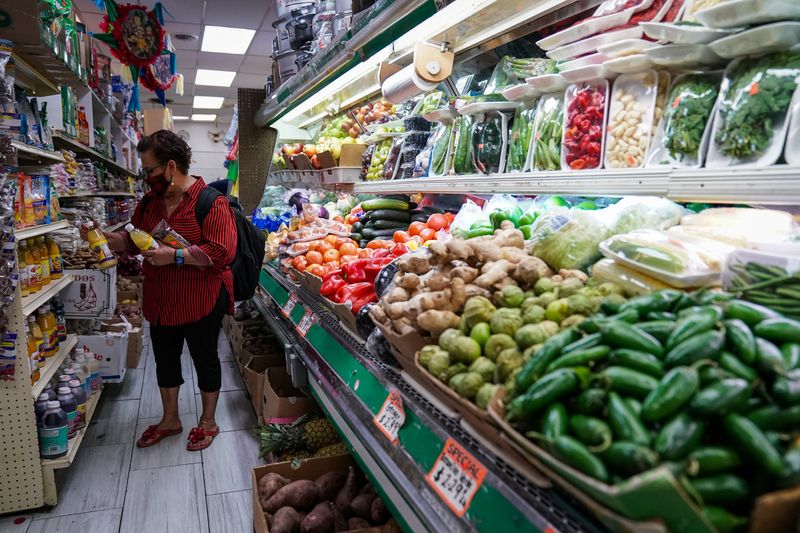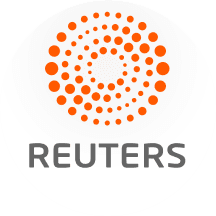
NEW YORK (Reuters) -U.S. producer prices increased more than expected in July amid a surge in the costs of services and goods, suggesting a broader pickup in inflation in the months ahead.
The producer price index for final demand jumped 0.9% last month after being unchanged in June, the Labor Department's Bureau of Labor Statistics said on Thursday. Economists polled by Reuters had forecast the PPI rising 0.2%.
MARKET REACTION:
STOCKS: U.S. stock index futures dipped after the PPI data.BONDS: U.S. Treasury yields initially pared their increase, but edged up slightly again; two-year yield last up 2.7 basis points at 3.714%.FOREX: The dollar index was last up 0.4% at 98.07.
COMMENTS:
MICHAEL BROWN, SENIOR RESEARCH STRATEGIST, PEPPERSTONE, LONDON:
"(There is) just a knee jerk hawkish reaction (in FX markets) across the board to not only the PPI stats themselves, but also the implication that it'll lead to a hot PCE figure later in the month."
"I wouldn't expect the rebound in the buck to be particularly sustainable though, as the OIS (Overnight Index Swap) curve hasn't budged especially much, and the market is very much likely to remain 'all in' on the idea of a September cut, at least until we hear from Powell at Jackson Hole next week, in turn posing a headwind for the buck for the time being."
JUAN PEREZ, DIRECTOR OF TRADING, MONEX USA, WASHINGTON:
"It makes sense for the buck to rise against its peers as the fact that suppliers seem to be absorbing higher costs will lead to questioning if it is appropriate for the Fed to jump into cutting interest rates in September. While markets and the administration would like lower borrowing costs, PPI and CPI make a case that price growth remains too stubborn and the way for Fed officials to actually be convinced to cut will emanate from concerns over growth...thus far, nothing screams that this is time to worry and we need more labor deterioration and pessimism in confidence surveys to make a case that stimulus is necessary. For now, dollar strengthening correlating positively with equities that are somewhat convinced financial accommodation is on its way."
BRIAN JACOBSEN, CHIEF ECONOMIST, ANNEX WEALTH MANAGEMENT, BROOKFIELD, WISCONSIN: (VIA EMAIL)
"The jump in PPI is eye-catching, but the details are where the action is. The headline PPI increase was mostly due to margin expansion for wholesalers and retailers. Distributors could be leaning on their suppliers to absorb the tariff shock while using tariffs as a cover to justify some price increases. There's nothing mechanical about the effects of tariffs on consumer prices. The effects show up in all sorts of different places."
PETER ANDERSEN, FOUNDER OF ANDERSEN CAPITAL MANAGEMENT, BOSTON:
"It's sending a mixed message about the economy. We have been too anxious to draw a conclusion that the economy is fine, it's not overheated. But this wholesale data does show that perhaps there is some inflation working and we shouldn't be so quick to conclude, we need to cut interest rates. It reinforces the case that the Fed might say we still don't have a clear picture yet based on the tariffs in the employment picture to take any action and I would expect that they would tend to be neutral and make no change in September as opposed to the majority of opinions out there. I do think it would be premature if they did."
CHRIS ZACCARELLI, CHIEF INVESTMENT OFFICER, NORTHLIGHT ASSET MANAGEMENT, CHARLOTTE: (VIA EMAIL)
"The large spike in the Producer Price Index (PPI) this morning shows inflation is coursing through the economy, even if it hasn't been felt by consumers yet. Given how benign the CPI numbers were on Tuesday, this is a most unwelcome surprise to the upside and is likely to unwind some of the optimism of a 'guaranteed' rate cut next month."
(Compiled by the Global Finance & Markets Breaking News team)

 Reuters US Economy
Reuters US Economy
 Spectrum News Louisville
Spectrum News Louisville WBAL NewsRadio
WBAL NewsRadio 104FM WIKY
104FM WIKY WRCB-TV
WRCB-TV Newsday
Newsday The radio station 99.5 The Apple
The radio station 99.5 The Apple AlterNet
AlterNet TownTimes news.com
TownTimes news.com CNN Business
CNN Business Fontana Herald News
Fontana Herald News Daily Herald Lifestyle
Daily Herald Lifestyle America News
America News